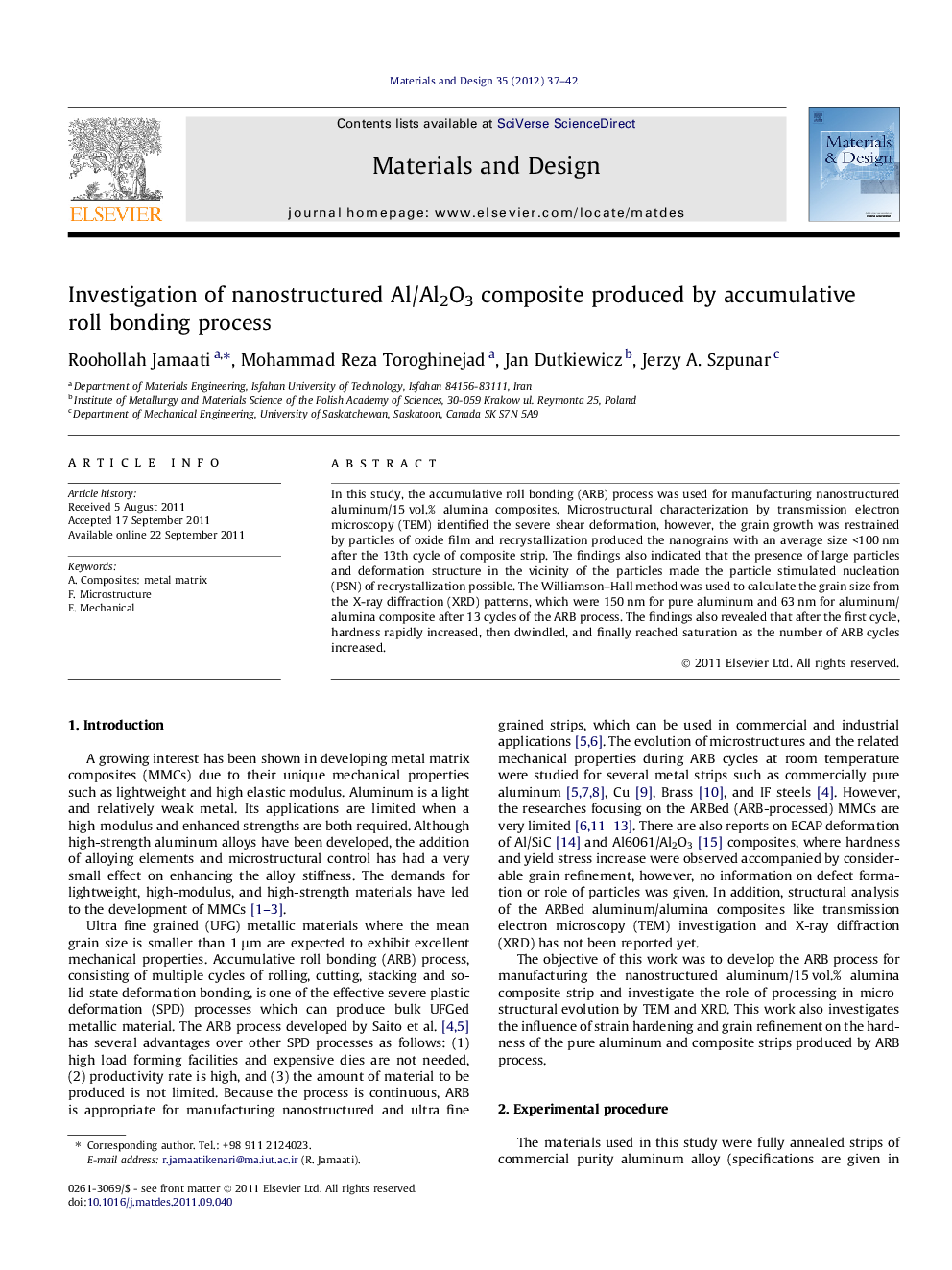| Article ID | Journal | Published Year | Pages | File Type |
|---|---|---|---|---|
| 830909 | Materials & Design (1980-2015) | 2012 | 6 Pages |
In this study, the accumulative roll bonding (ARB) process was used for manufacturing nanostructured aluminum/15 vol.% alumina composites. Microstructural characterization by transmission electron microscopy (TEM) identified the severe shear deformation, however, the grain growth was restrained by particles of oxide film and recrystallization produced the nanograins with an average size <100 nm after the 13th cycle of composite strip. The findings also indicated that the presence of large particles and deformation structure in the vicinity of the particles made the particle stimulated nucleation (PSN) of recrystallization possible. The Williamson–Hall method was used to calculate the grain size from the X-ray diffraction (XRD) patterns, which were 150 nm for pure aluminum and 63 nm for aluminum/alumina composite after 13 cycles of the ARB process. The findings also revealed that after the first cycle, hardness rapidly increased, then dwindled, and finally reached saturation as the number of ARB cycles increased.
► ARB process was performed for manufacturing the nanostructured composite strip. ► TEM confirmed that the development of UFGs by ARB involves several mechanisms. ► The mean grain size after the 13 ARB cycles of MMC strip was <100 nm. ► The grain size of composite calculated by the Williamson–Hall technique was 63 nm. ► The MMC exhibited a higher hardness than the annealed and ARBed pure aluminum.
